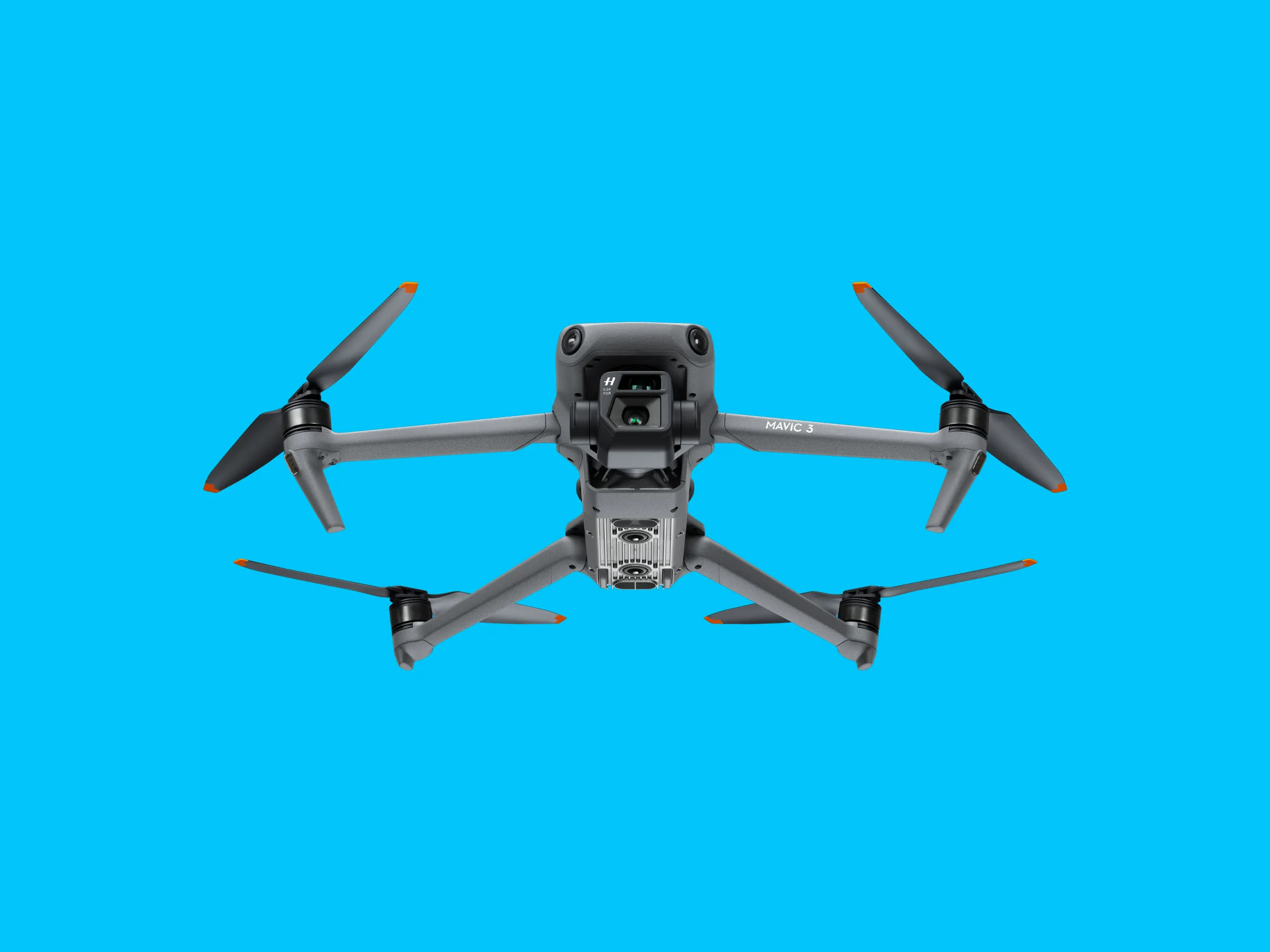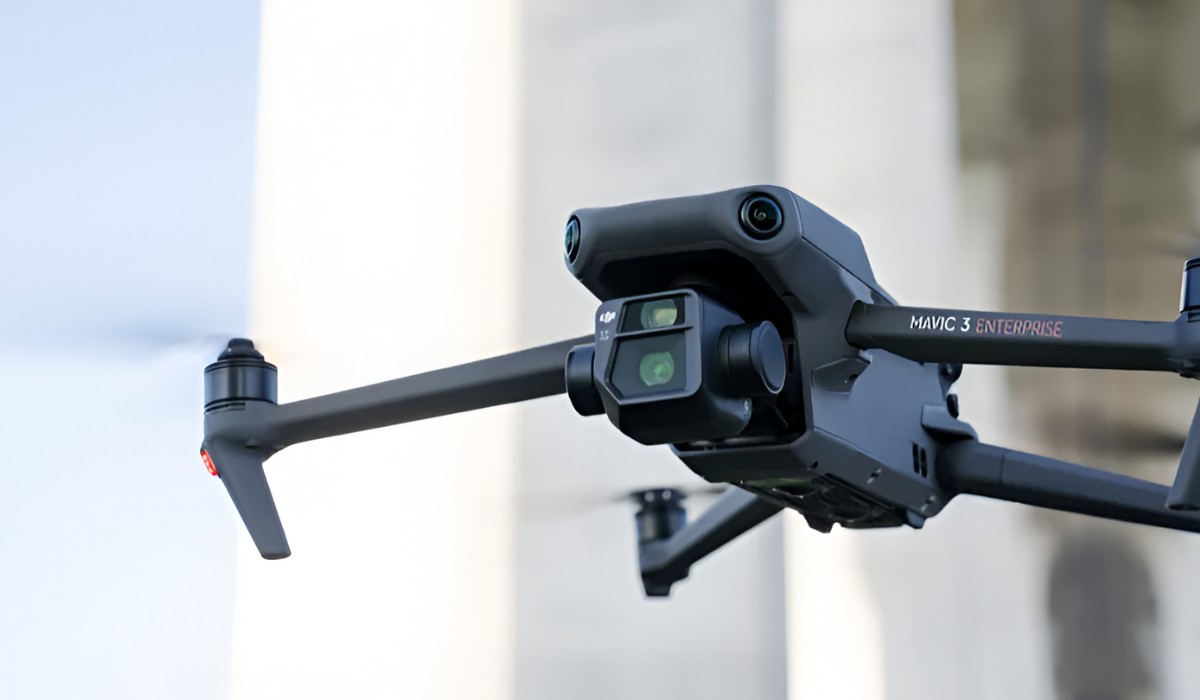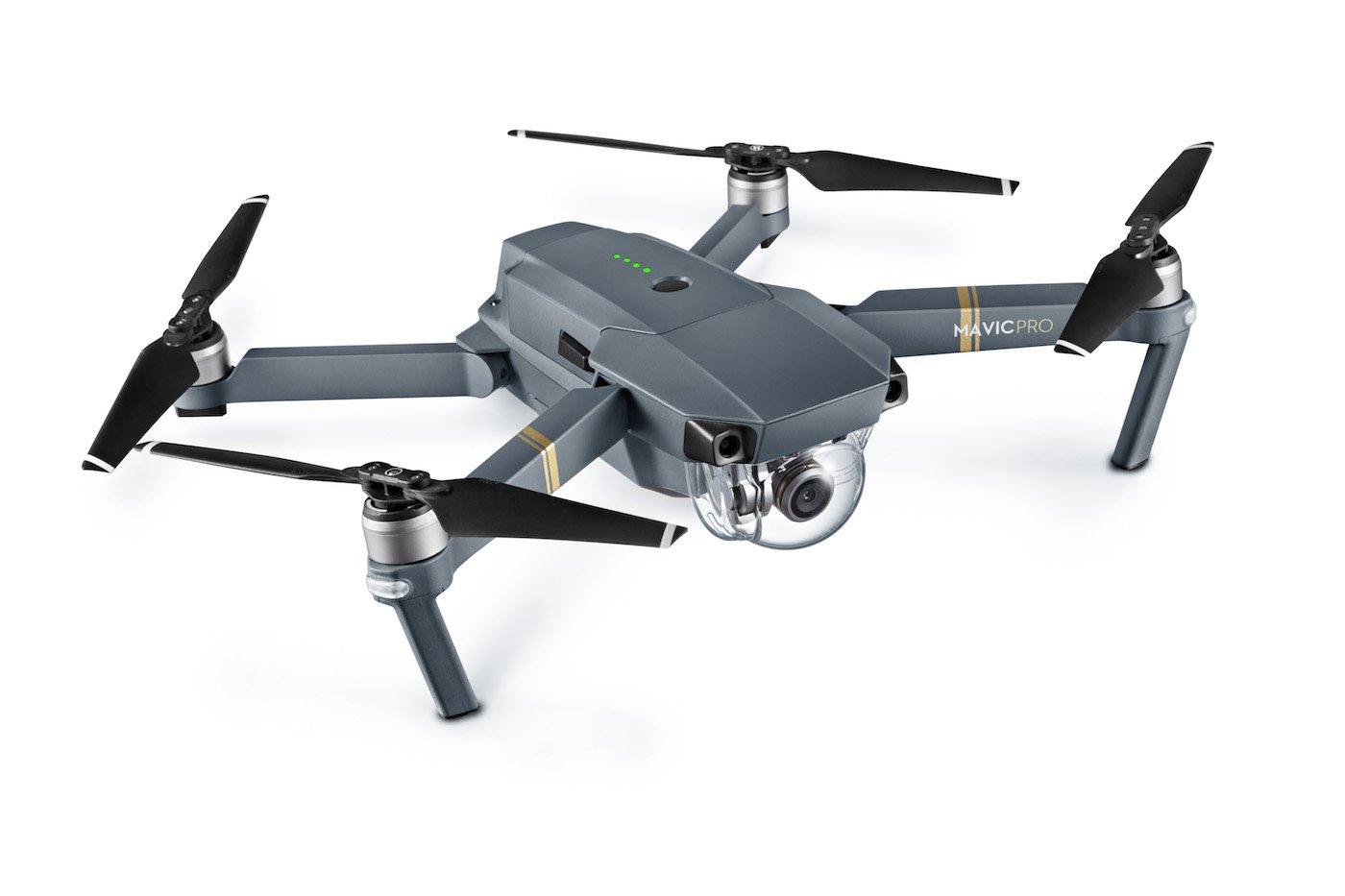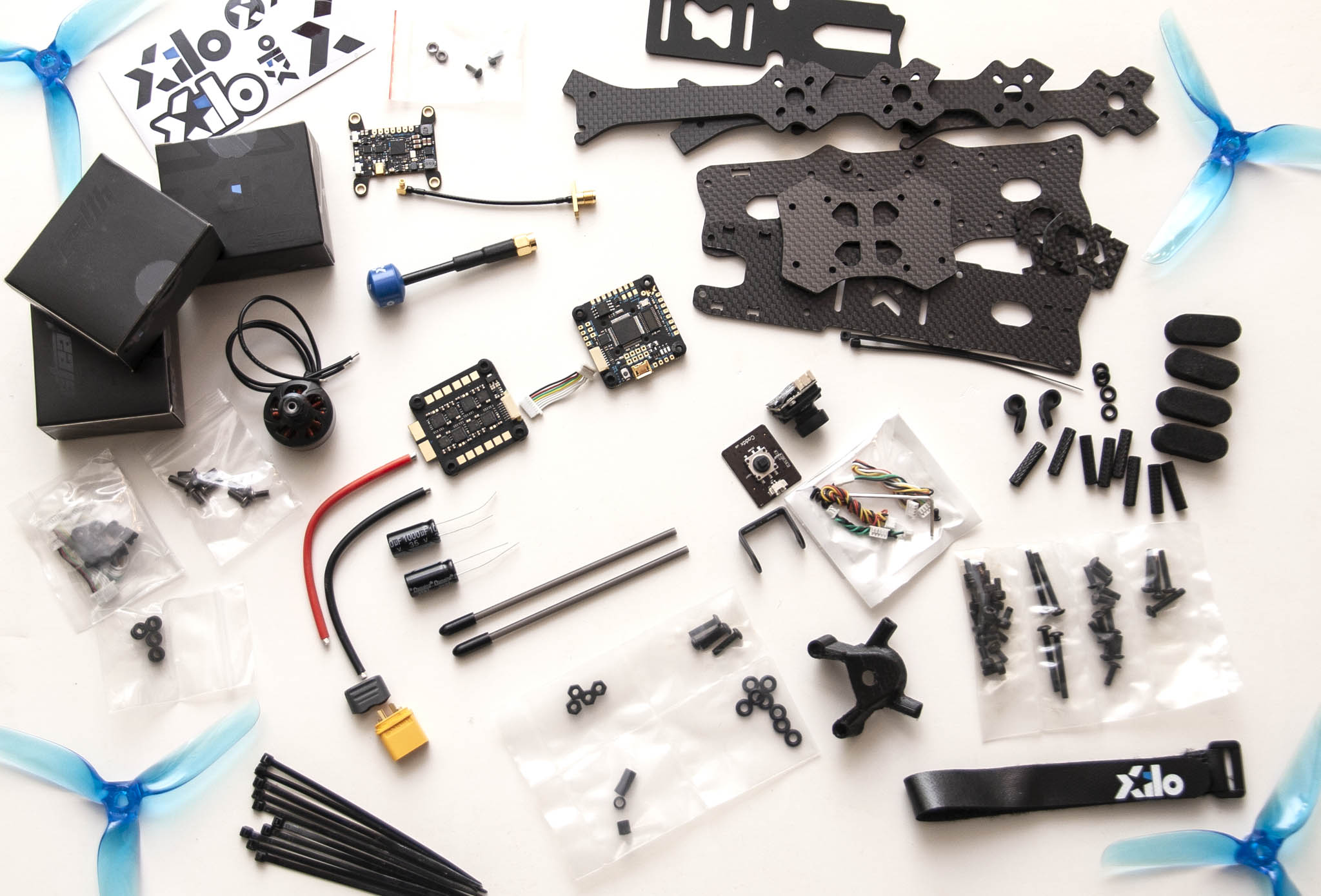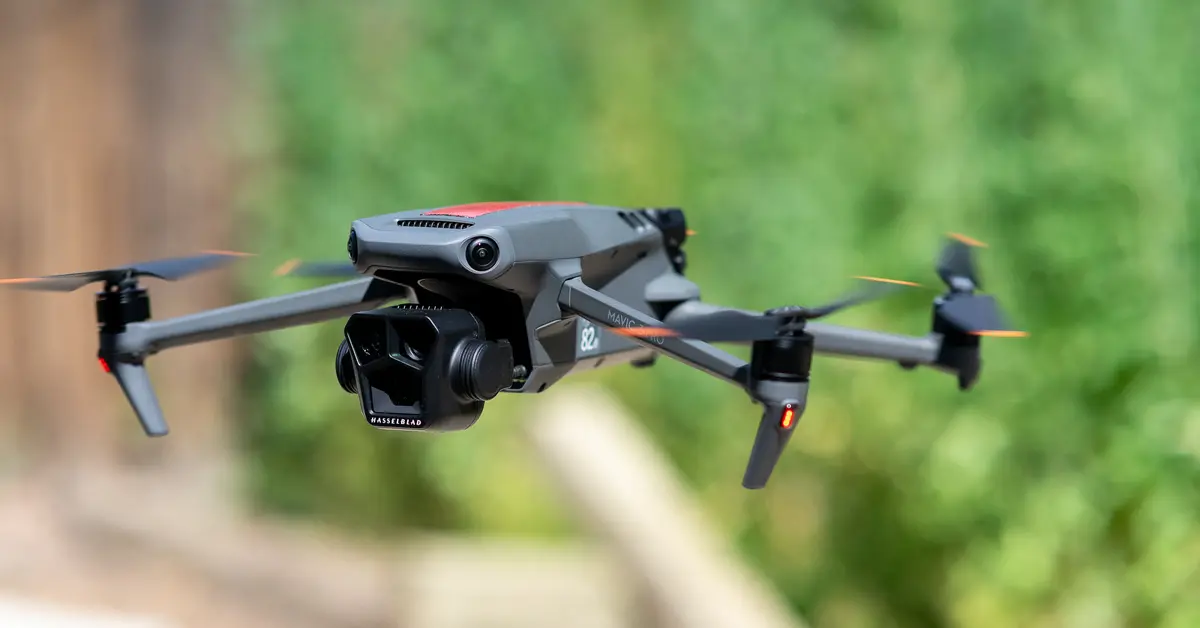Introduction
Welcome to the exciting world of drone services! Drones have revolutionized various industries, from photography and videography to surveying and inspections. If you’re looking to capitalize on the growing demand for drone services, this article will guide you on how to effectively sell your drone services.
Unmanned aerial vehicles, or drones, offer unique perspectives and capabilities that were once only possible with expensive equipment and specialized teams. Now, with a drone and the right skills, you can provide stunning aerial imagery, efficient data collection, and innovative solutions to businesses and individuals alike.
However, selling your drone services requires more than just flying a drone. It involves understanding the market, identifying your target audience, showcasing your expertise, and delivering exceptional customer experiences. By following this comprehensive guide, you’ll be equipped with the knowledge and strategies to succeed in the drone services industry.
Whether you’re an experienced drone pilot looking to expand your business or a newcomer eager to embark on this exciting venture, this article will provide you with valuable insights and practical tips for selling your drone services effectively.
Throughout this article, we’ll cover various essential aspects of selling drone services, including understanding the drone services market, identifying your target audience, showcasing your expertise and portfolio, creating an effective website and online presence, pricing your services strategically, developing a marketing and advertising plan, networking and collaborating with industry professionals, building trust and credibility with potential clients, delivering a stellar customer experience, and handling challenges and difficult clients.
So, if you’re ready to take your drone services business to new heights, let’s dive into the world of selling drone services!
Understanding the Drone Services Market
Before diving into the business of selling drone services, it’s crucial to gain a comprehensive understanding of the drone services market. The market for drone services has experienced rapid growth in recent years, with businesses and individuals increasingly recognizing the value and potential applications of drones.
One key factor to consider is the industry or industries you wish to target with your drone services. Drones are being utilized across a wide range of sectors, including aerial photography and videography, real estate, construction, agriculture, surveying, mapping, inspections, and more. Understanding the specific needs and requirements of each industry will help you tailor your services and marketing approach accordingly.
Keep in mind that regulations and restrictions play a crucial role in the drone services market. Familiarize yourself with the local laws regarding drone operations, permits, and certifications. Stay updated on any changes or new regulations that may impact your ability to provide drone services legally and safely.
Furthermore, research your competition to gain insights into the current market landscape. Identify other drone service providers in your area or industry to understand the services they offer, their pricing structure, and their reputation. This information will allow you to differentiate yourself and highlight your unique value proposition.
Another aspect to consider is the potential demand for drone services. Analyze the market to determine if there is a sufficient customer base in your area or if there are untapped niche markets that you can cater to. Conduct market research, speak with potential clients, and evaluate the potential return on investment for your drone services business.
Lastly, it’s important to stay informed about the latest advancements in drone technology and services. The drone industry is constantly evolving, with new features, capabilities, and applications emerging regularly. Stay up to date with industry news, attend conferences and trade shows, and engage with online communities to stay ahead of the curve and position yourself as a knowledgeable and innovative drone service provider.
By understanding the drone services market, including industry-specific demands, regulations, competition, potential demand, and technological advancements, you’ll be well-equipped to navigate the market successfully and position your drone services for maximum impact and profitability.
Identifying Your Target Audience
When selling drone services, it’s crucial to identify and understand your target audience. Successfully reaching and appealing to your ideal customers will greatly enhance your chances of securing business partnerships and long-term clients.
Start by thinking about the industries or sectors that can benefit the most from drone services. Consider those that require aerial imagery, data collection, or inspections. This may include real estate agencies, construction companies, agriculture businesses, insurance companies, event planners, and more. Narrow down your focus to a few industries that align with your expertise and interests.
Next, research and identify specific organizations or decision-makers within those industries who can benefit from your drone services. Look for businesses that are already utilizing or showing an interest in drone technology. Reach out to local associations or industry groups to gather valuable insights and connections.
Once you have a list of potential clients, dive deeper into understanding their pain points and needs. Consider the challenges they face and how your drone services can provide effective solutions. This will help you craft targeted marketing messages and tailor your services to their specific requirements.
Another crucial aspect of identifying your target audience is considering the geographical location. Determine the areas where your potential clients are concentrated and assess the local competition. Are there other drone service providers in the area? What services do they offer, and how can you differentiate yourself?
Additionally, consider the size and budget of your target audience. Are you targeting small businesses, large enterprises, or both? Understanding their budget constraints will help you determine your pricing strategy and package offerings.
Lastly, it’s essential to continually refine and adapt your target audience as your business grows and evolves. Regularly reassess your market research and customer feedback to identify any shifts or emerging trends. Stay open to exploring new industries or niches that may emerge over time.
By accurately identifying your target audience, you can better align your marketing efforts, tailor your services, and establish meaningful connections with potential clients. This understanding will ultimately lead to more effective marketing, stronger client relationships, and increased success in selling your drone services.
Showcasing Your Expertise and Portfolio
When it comes to selling drone services, showcasing your expertise and portfolio is essential in gaining the trust and confidence of potential clients. Your skills, experience, and past work will serve as powerful tools to demonstrate your capabilities and convince clients to choose your services.
Start by highlighting your expertise and qualifications as a drone pilot. If you have any certifications, licenses, or specialized training, make sure to mention them. Emphasize your knowledge of aerial photography techniques, drone equipment, and regulations. This will assure clients that they are working with a skilled and knowledgeable professional.
Building a comprehensive portfolio is vital in showcasing your past projects and demonstrating your capabilities. Include high-quality images and videos of different types of aerial shots you have captured, such as landscape views, building inspections, event coverage, or agricultural surveys. Make sure to showcase the diversity of your work, highlighting different industries and applications.
If possible, provide case studies or testimonials from satisfied clients. These testimonials serve as social proof and validate the quality of your services. Include quotes or stories that showcase the positive impact your drone services have had on your clients’ businesses.
Creating an online presence is essential to make your expertise and portfolio easily accessible. Develop a visually compelling website that showcases your work effectively. Use high-resolution images and videos to give potential clients a glimpse into the quality of your services. Provide detailed descriptions of each project, including the goals, challenges, and solutions you provided.
Utilize social media platforms to your advantage. Share some of your best shots and behind-the-scenes glimpses of your work. Interact with potential clients and participate in relevant communities or groups. Engaging with your audience will help establish your credibility and attract potential clients to your services.
Networking plays a crucial role in showcasing your expertise and expanding your reach. Attend industry events, trade shows, and conferences to connect with potential clients and industry professionals. Set up meetings, exchange business cards, and engage in meaningful conversations. Building relationships with decision-makers in your target industries can lead to valuable collaborations and referrals.
Continuously update your portfolio and online presence as you complete new projects. Highlight any new skills, certifications, or accomplishments to keep your audience informed and interested in your services.
By showcasing your expertise, portfolio, and testimonials, you will build trust, credibility, and confidence in potential clients. This will significantly increase your chances of securing new business opportunities and long-term client relationships.
Creating an Effective Website and Online Presence
In today’s digital age, having an effective website and online presence is essential for selling drone services. Your website serves as a virtual storefront, showcasing your services, expertise, and portfolio. It is often the first point of contact for potential clients, so it’s important to make a strong and professional impression.
When creating your website, keep in mind the following key elements:
- Clean and Professional Design: Opt for a clean and modern design that is visually appealing and easy to navigate. Use high-quality images and videos to capture the attention of your visitors and showcase your work effectively. Consider hiring a professional web designer if you lack the skills or resources to create a visually stunning website on your own.
- Clear and Concise Messaging: Clearly communicate your services, expertise, and the benefits clients can expect from working with you. Use concise and compelling language to convey the value of your drone services.
- Portfolio Display: Create a dedicated section where you can showcase your best work. Feature a diverse range of projects to demonstrate your capabilities across various industries and applications. Add descriptions and client testimonials to provide context and credibility.
- Contact Information: Make it easy for potential clients to get in touch with you. Display your contact information prominently, including your email address, phone number, and social media profiles.
- Services and Pricing: Clearly outline the services you offer and provide pricing information, if possible. Transparency in pricing can help potential clients understand the costs upfront and make a decision more easily.
- Mobile-Friendly: Ensure that your website is optimized for mobile devices. With the growing use of smartphones and tablets, it’s crucial that your website is accessible and user-friendly on all devices.
- Search Engine Optimization (SEO): Implement basic SEO strategies to improve your website’s visibility in search engine results. Research appropriate keywords and incorporate them naturally throughout your website content to attract organic traffic.
- Engaging Content: Include informative and engaging content on your website, such as blog posts, articles, or video tutorials related to drone services. This not only demonstrates your expertise but also helps to establish you as a thought leader in the industry.
In addition to your website, it’s important to establish an online presence through social media platforms. Choose the platforms that are most relevant to your target audience and actively engage with them. Share updates, behind-the-scenes glimpses of your work, and industry insights. Respond to comments and messages promptly to showcase your professionalism and build relationships with potential clients.
By creating a professional website and maintaining an active online presence, you will strengthen your brand, increase your visibility, and attract potential clients to your drone services.
Pricing Your Services Strategically
Setting the right pricing strategy for your drone services is crucial to attract clients, remain competitive, and ensure profitability. However, determining the appropriate pricing for your services can be challenging. Here are some key factors to consider when pricing your drone services:
- Cost Analysis: Start by calculating all the costs associated with running your drone services business. Consider factors such as equipment, maintenance, insurance, training, software, and any other expenses. This analysis will help you determine the minimum price you need to charge to cover your costs and make a profit.
- Market Analysis: Research the prices charged by other drone service providers in your area or within your target industry. It’s important to have an understanding of the market rates to ensure you remain competitive. However, avoid undercutting excessively, as it may devalue your services and make it difficult to sustain your business in the long run.
- Value-based Pricing: Consider the unique value and benefits your drone services provide to clients. Are you able to offer high-quality aerial imaging, efficient data collection, or cost-effective solutions? Pricing based on the value you provide can justify higher rates and attract clients who are willing to pay for quality services.
- Service Packages: Consider offering different service packages at varying price points. This allows clients to choose the package that best suits their needs and budget. Include different levels of service, such as basic, standard, and premium, and clearly outline the features and deliverables included in each package.
- Discounts and Promotions: Use discounts and promotions strategically to attract new clients or upsell existing clients. Consider offering discounted rates for first-time clients, bulk bookings, or long-term contracts. However, be cautious not to devalue your services or compromise your profitability by offering excessive discounts.
- Flexibility for Customization: Provide flexibility in your pricing to accommodate custom requests or unique projects. Some clients may require specific services or have special circumstances that warrant a different pricing structure. This flexibility can help you cater to a wider range of clients and maximize your revenue potential.
- Regular Review and Adjustments: Regularly review and evaluate your pricing strategy. Monitor market trends, gather client feedback, and assess your business’s financial performance. Adjust your pricing as necessary to stay competitive, ensure profitability, and adapt to changes in the market demand.
Remember, pricing is not a one-size-fits-all approach. It requires careful consideration of your costs, market rates, value proposition, and the unique needs of your target audience. Striking the right balance between being competitive and profitable will help position your drone services for success in the market.
Developing a Marketing and Advertising Plan
Developing an effective marketing and advertising plan is essential for successfully selling your drone services. It helps you reach your target audience, differentiate yourself from the competition, and generate leads. Here are some key steps to consider when developing your plan:
- Define Your Goals: Start by defining your marketing goals. What do you hope to achieve with your marketing efforts? Do you want to increase brand awareness, generate leads, or promote a specific service? Setting clear and measurable goals will help you create a focused marketing strategy.
- Know Your Audience: Understand your target audience and their specific needs. Identify their demographics, interests, and pain points. This knowledge will guide your messaging and help you tailor your marketing efforts to resonate with your audience.
- Develop Your Unique Selling Proposition (USP): Determine what sets your drone services apart from the competition. What makes you unique and why should potential clients choose you? Your USP will be the foundation of your marketing messages and will help you stand out in a crowded market.
- Online Presence: Establish a strong online presence to showcase your expertise and attract potential clients. Create a professional website, optimize it for search engines, and regularly update it with engaging content. Use social media platforms strategically to share your work, engage with your audience, and build your brand.
- Content Marketing: Develop a content marketing strategy to provide valuable information to your target audience. Create blog posts, videos, or podcasts that highlight the benefits of drone services, offer tips and insights, and showcase your work. This positions you as an industry expert and builds trust with potential clients.
- Networking and Partnerships: Attend industry events, join professional associations, and network with potential clients and partners. Collaborate with complementary businesses, such as photographers, videographers, or event planners, to expand your reach and tap into their existing networks.
- Referrals: Encourage word-of-mouth referrals by providing exceptional service and maintaining positive relationships with your clients. Offer incentives for clients to refer your services to others, such as discounts or referral rewards.
- Online Advertising: Consider investing in online advertising, such as Google Ads or social media ads, to reach a wider audience. Utilize targeting options to ensure your ads are seen by potential clients who fit your ideal customer profile.
- Track and Measure Results: Regularly track and analyze the performance of your marketing efforts. Monitor website traffic, conversion rates, and leads generated. Use this data to make informed decisions and adjust your marketing plan as necessary.
By developing a comprehensive marketing and advertising plan, you can effectively promote your drone services, reach your target audience, and generate valuable leads. Remember to continuously evaluate and refine your strategies to ensure their effectiveness and adapt to changing market conditions.
Networking and Collaborating with Industry Professionals
In the world of drone services, networking and collaborating with industry professionals can be instrumental in growing your business and gaining credibility. Building strong relationships within the industry not only expands your network but also opens up opportunities for partnerships, referrals, and shared knowledge. Here are some strategies to effectively network and collaborate with industry professionals:
- Attend Industry Events: Participate in conferences, trade shows, and workshops that are specific to your target industries. These events provide valuable opportunities to meet potential clients and establish connections with other professionals in the drone industry.
- Join Professional Associations or Networks: Look for local or national professional associations and networks related to drone services. Membership in these organizations can offer access to resources, industry updates, and networking events.
- Engage in Online Communities: Participate in online communities, forums, and social media groups that focus on drones, aerial photography, or related industries. Actively contribute to discussions, share your knowledge, and engage with fellow professionals.
- Collaborate with Complementary Service Providers: Seek out collaborations with professionals who offer complementary services, such as photographers, videographers, or event planners. By combining your expertise, you can provide comprehensive solutions to clients and cross-promote each other’s services.
- Offer Value and Support: Be willing to share your knowledge and support others in the industry. Offer advice, tips, or insights through blog posts, articles, or social media. By establishing yourself as a helpful resource, you can gain trust and build relationships with other professionals.
- Attend Drone Meetups or Workshops: Look for local drone meetups or workshops where professionals come together to discuss industry trends, share experiences, and exchange ideas. These events provide a relaxed and informal setting to network and learn from others.
- Seek Mentorship: Connect with experienced professionals in the drone industry and seek mentorship. Learn from their experiences, seek guidance on overcoming challenges, and gain insights into building a successful drone services business.
- Participate in Collaborative Projects: Collaborate with other professionals on projects that require drone services. This could be in the form of aerial photography shoots, videography projects, or even joint marketing campaigns. By working together, you can expand your portfolio and reach a wider audience.
- Attend Webinars or Online Training: Take advantage of webinars or online training sessions offered by industry experts. This allows you to expand your knowledge, gain insights, and interact with professionals from around the world.
Remember, networking and collaborating with industry professionals requires a genuine and proactive approach. Be genuine in your interactions, support others, and always look for opportunities to provide value. By building a strong network of industry professionals, you can increase your visibility, gain valuable referrals, and tap into a wealth of resources and knowledge to succeed in the drone services industry.
Building Trust and Credibility with Potential Clients
Gaining trust and credibility is essential for successfully selling your drone services. Clients want assurance that they are working with a reliable and capable professional. Building trust not only helps you win new clients but also fosters long-term relationships and encourages positive referrals. Here are some key strategies to build trust and credibility with potential clients:
- Professionalism and Reliability: Demonstrate professionalism in all your interactions with potential clients. Be prompt in responding to inquiries, follow through on commitments, and deliver services on time and as promised. Consistency in your actions will establish you as a reliable and trustworthy partner.
- Transparency and Honesty: Be transparent about your capabilities, pricing structure, and any limitations of your services. Honesty builds trust and helps manage client expectations. Clearly communicate what clients can expect from your services and any potential challenges they may encounter.
- Relevant Expertise: Highlight your expertise and experience in the field of drone services. Showcase your knowledge and understanding of the specific requirements of different industries. Providing relevant insights and solutions demonstrates your competence and builds trust in potential clients.
- Client Testimonials and Case Studies: Share testimonials and case studies from satisfied clients to provide social proof of your capabilities and the positive outcomes of your drone services. Display these testimonials prominently on your website and use them in your marketing materials to build credibility.
- Quality Portfolio and Samples: Maintain a high-quality portfolio that showcases your best work. Include diverse examples that highlight your skills and the range of services you offer. This visual evidence can help potential clients envision the quality of work they can expect from you.
- Clear Communication: Establish clear lines of communication with potential clients. Actively listen to their needs and concerns, and provide clear and concise information. Keep clients informed about the progress of their projects and respond promptly to their inquiries or requests.
- Focus on Customer Service: Provide exceptional customer service at every stage of the client journey. Be attentive, friendly, and helpful in your interactions. Strive to exceed client expectations and address any concerns or issues promptly and professionally.
- Consistent Branding: Develop a consistent brand image across all your marketing materials, website, social media profiles, and communication channels. Consistency builds trust and makes it easier for potential clients to recognize and remember your brand.
- Continual Professional Development: Stay updated with the latest trends, regulations, and advancements in the drone industry. Training courses, certifications, and industry events can enhance your skills and demonstrate your commitment to providing top-notch services.
- Protect Client Data and Privacy: Maintain client confidentiality and take appropriate measures to protect their data. Clearly communicate your data privacy policies and reassure potential clients that their information will be treated with the utmost care and security.
Building trust and credibility takes time, consistent effort, and a commitment to delivering exceptional service. By demonstrating professionalism, transparency, expertise, and a focus on customer satisfaction, you can build strong relationships with potential clients and establish yourself as a trusted partner in the drone services industry.
Delivering a Stellar Customer Experience
Providing a stellar customer experience is a key aspect of selling your drone services and creating loyal, satisfied clients. A positive and memorable experience not only builds trust but also leads to repeat business, referrals, and positive word-of-mouth. Here are some strategies to deliver a stellar customer experience:
- Clear Communication: Establish open and clear lines of communication with your clients from the start. Promptly respond to inquiries, provide regular updates throughout the project, and clarify any questions or concerns they may have. Be proactive in keeping them informed about the progress of their project.
- Emphasize Customer Service: Put the needs of your clients first and prioritize their satisfaction. Be attentive and responsive to their requests, providing personalized solutions when possible. Strive to exceed their expectations in terms of quality, timeliness, and service.
- Manage Expectations: Set realistic expectations with your clients from the beginning. Clearly communicate the scope of your services, the timeline, and any potential limitations or challenges they may encounter. Being transparent about what they can expect will help prevent misunderstandings and ensure a smoother experience.
- Attention to Detail: Pay attention to the small details that can make a big difference in the customer experience. This includes ensuring the quality of your work, delivering on time, and providing clear and organized documentation or deliverables. Small gestures can go a long way in leaving a positive and lasting impression.
- Flexibility and Adaptability: Be willing to accommodate special requests or changes within reason. Adapt to unexpected circumstances or shifting client needs as much as possible. Demonstrating flexibility and a willingness to go the extra mile can set you apart from your competition and enhance the customer experience.
- Quality Assurance: Maintain high standards of quality in your work. Regularly review and refine your processes to ensure that you consistently deliver top-notch results. Conduct thorough quality checks to catch any errors or inconsistencies before delivering your final product.
- Solicit and Act on Feedback: Encourage clients to provide feedback on their experience working with you. Actively listen to their suggestions, critiques, and concerns, and use this feedback to improve your services. Show clients that their opinions are valued and that you’re committed to continuous improvement.
- Personalized Touch: Take the time to personalize your interactions with each client. Address them by name, remember specific details about their project or preferences, and show genuine interest in their needs. This personal touch creates a connection and makes clients feel valued and appreciated.
- Post-Project Engagement: Stay connected with your clients even after the project is completed. Follow up to ensure their satisfaction, answer any lingering questions, and inquire about any future needs they may have. Regularly staying in touch can lead to repeat business and referrals.
- Continual Improvement: Strive for continuous improvement in all aspects of your business. Seek out opportunities for professional development, stay updated on industry trends, and actively seek feedback from clients. By consistently improving your skills and services, you can provide an ever-evolving stellar customer experience.
By delivering a stellar customer experience that exceeds expectations, you can differentiate yourself from competitors and build strong, long-lasting relationships with your clients. Remember, happy clients are more likely to become repeat customers and advocates for your drone services.
Handling Challenges and Difficult Clients
Dealing with challenges and difficult clients is an inevitable part of running any business, including selling drone services. It’s important to approach these situations with professionalism, empathy, and effective communication to maintain positive client relationships and protect your reputation. Here are some strategies for handling challenges and difficult clients:
- Active Listening: When faced with challenges or difficult clients, start by actively listening to their concerns and needs. Allow them to express their frustrations or issues, and make a sincere effort to understand their perspective. This demonstrates empathy and shows that you value their opinion.
- Stay Calm and Professional: Even in the face of challenging situations, it’s important to remain calm, composed, and professional. Avoid reacting defensively or becoming confrontational. Respond to difficult clients with patience and understanding to defuse tensions and maintain a constructive dialogue.
- Seek a Win-Win Solution: Instead of viewing challenges as a win-lose situation, strive to find a solution that satisfies both parties. Collaborate with the client to identify alternative options or compromises that address their concerns while still aligning with your capabilities and goals.
- Take Responsibility: If a mistake or error was made on your part, take responsibility and apologize to the client. Show them that you acknowledge the issue and are taking necessary steps to rectify it. Offering a sincere apology can go a long way in rebuilding trust and maintaining the client relationship.
- Communicate Effectively: Clear and open communication is paramount when dealing with challenges or difficult clients. Clearly explain your processes, limitations, or any factors that may be causing the issue. Regularly update the client on the progress of resolving the issue and provide realistic timelines for resolution.
- Set Boundaries: Establish and communicate clear boundaries with difficult clients to manage expectations. While it’s important to work towards a resolution, it’s equally important to assert your expertise and assertiveness when necessary. Communicate your policies, terms, and conditions to ensure a mutually beneficial working relationship.
- Document Everything: Keep detailed records of all communications, interactions, and agreements with clients. This includes emails, phone calls, and any changes to scope or requirements. Having a paper trail can help protect your interests and provide evidence if disputes arise.
- Know When to Disengage: In rare cases where a client becomes consistently difficult or unreasonable, it may be necessary to evaluate the viability of the working relationship. If efforts to find a resolution are unsuccessful and the client’s behavior becomes detrimental to your business, it may be in your best interest to terminate the engagement professionally and respectfully.
- Learn and Improve: Treat challenges and difficult client situations as valuable learning opportunities. Reflect on these experiences and identify areas for improvement in your processes, communication, or client management. Continuously seek ways to enhance your services and strengthen your client relationships.
Remember, challenges and difficult clients can test your patience and resilience, but they also present an opportunity for growth and improvement. By approaching these situations with professionalism, empathy, and effective communication, you can navigate through challenges, maintain positive client relationships, and protect your reputation in the drone services industry.
Maintaining and Growing Your Drone Services Business
Maintaining and growing your drone services business requires ongoing effort and strategic planning. As you establish your presence in the market, it’s important to focus on retaining existing clients, attracting new ones, and expanding your service offerings. Here are some strategies to maintain and grow your drone services business:
- Provide Exceptional Customer Service: Continuously prioritize customer satisfaction by delivering exceptional customer service. Maintain open lines of communication, respond promptly to inquiries, and ensure that your clients feel heard and valued. Consistently exceeding expectations will result in repeat business, positive referrals, and client loyalty.
- Encourage Client Referrals: Leverage satisfied clients to help grow your business through word-of-mouth referrals. Ask for testimonials, encourage online reviews, and offer incentives for clients who refer your services to others. A solid reputation and positive recommendations can significantly expand your client base.
- Stay Ahead of Technological Advancements: Continually monitor the latest advancements in drone technology and industry trends. Stay updated on new equipment, software, and regulations. Incorporate these advancements into your services to provide the most innovative and cutting-edge solutions to your clients.
- Expand Your Service Offerings: Explore new opportunities to expand your service offerings based on market demand and client needs. Consider adding new applications, such as thermal inspections, 3D modeling, or mapping services. Continuously assess the needs of your target industries and adapt your services to meet those evolving requirements.
- Invest in Professional Development: Commit to ongoing learning and professional development. Attend workshops, webinars, and industry conferences to enhance your skills and stay updated on industry best practices. Obtaining additional certifications or licenses can also increase your credibility and open doors to new clients and projects.
- Optimize Your Online Presence: Regularly update and optimize your website and social media profiles to maintain a strong online presence. Ensure that your website is user-friendly, mobile-responsive, and showcases your portfolio and client testimonials. Utilize search engine optimization (SEO) techniques to improve your visibility in online searches.
- Network with Industry Professionals: Continue to build and nurture relationships with other professionals in the drone industry. Attend networking events, collaborate on projects, and engage in industry forums and platforms. These connections can lead to valuable partnerships, knowledge sharing, and referral opportunities.
- Regularly Assess Your Pricing: Monitor and evaluate your pricing structure regularly to ensure it aligns with market rates and covers your costs while remaining competitive. Consider adjusting your rates periodically based on industry trends, changes in demand, or enhancements in your service offerings.
- Expand Your Geographic Reach: Consider expanding your geographic reach by targeting clients in new locations. Research areas with growing drone services demand or that have limited competition. Leverage your online presence and networking efforts to reach potential clients in these new markets.
- Monitor and Respond to Industry Changes: Stay informed about any regulatory changes, emerging trends, or shifts in client preferences. Adapt your business strategies accordingly to remain relevant and proactive in your approach.
By implementing these strategies and maintaining a growth mindset, you can position your drone services business for long-term success. Continual improvement, exceptional customer service, and a willingness to adapt to an ever-evolving industry will enable you to maintain a competitive edge and capture new opportunities in the drone services market.
Conclusion
Congratulations on completing this comprehensive guide on selling drone services! From understanding the drone services market to delivering a stellar customer experience, you’ve gained valuable insights and strategies to excel in this industry.
Successfully selling drone services requires a combination of technical skills, marketing savvy, and a commitment to exceptional service. By understanding the market, identifying your target audience, showcasing your expertise, and creating an effective online presence, you can attract and engage potential clients. Pricing your services strategically, developing a robust marketing plan, and networking with industry professionals will help you grow your client base and establish your brand.
Throughout this guide, we emphasized the importance of delivering a stellar customer experience, handling challenges, and continuously improving your services. Building trust and credibility with clients is essential for long-term success in the drone services industry.
Remember, the drone services market is dynamic, and new opportunities will continue to emerge. Stay informed about the latest technological advancements, industry trends, and regulatory changes. Be open to learning, networking, and adapting your services to meet the evolving needs of your clients.
With dedication, professionalism, and a customer-centric approach, you are well-equipped to thrive in the exciting world of selling drone services. Embrace the challenges, celebrate your successes, and never stop innovating in order to maintain a competitive edge and grow your drone services business.









